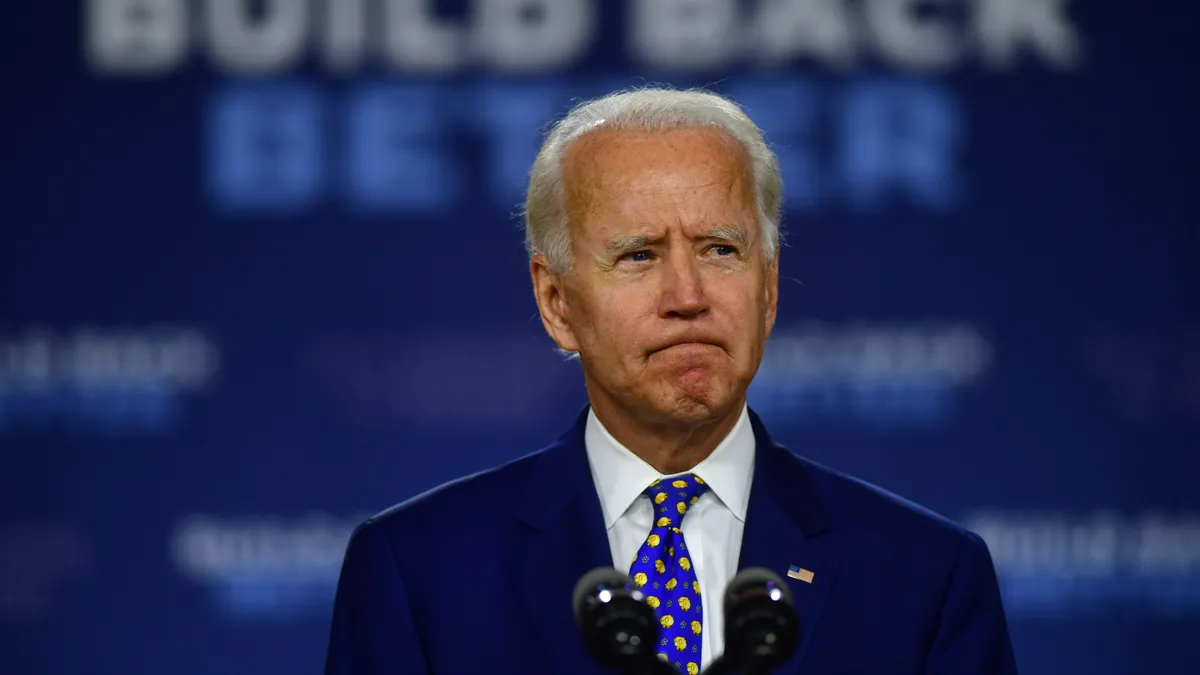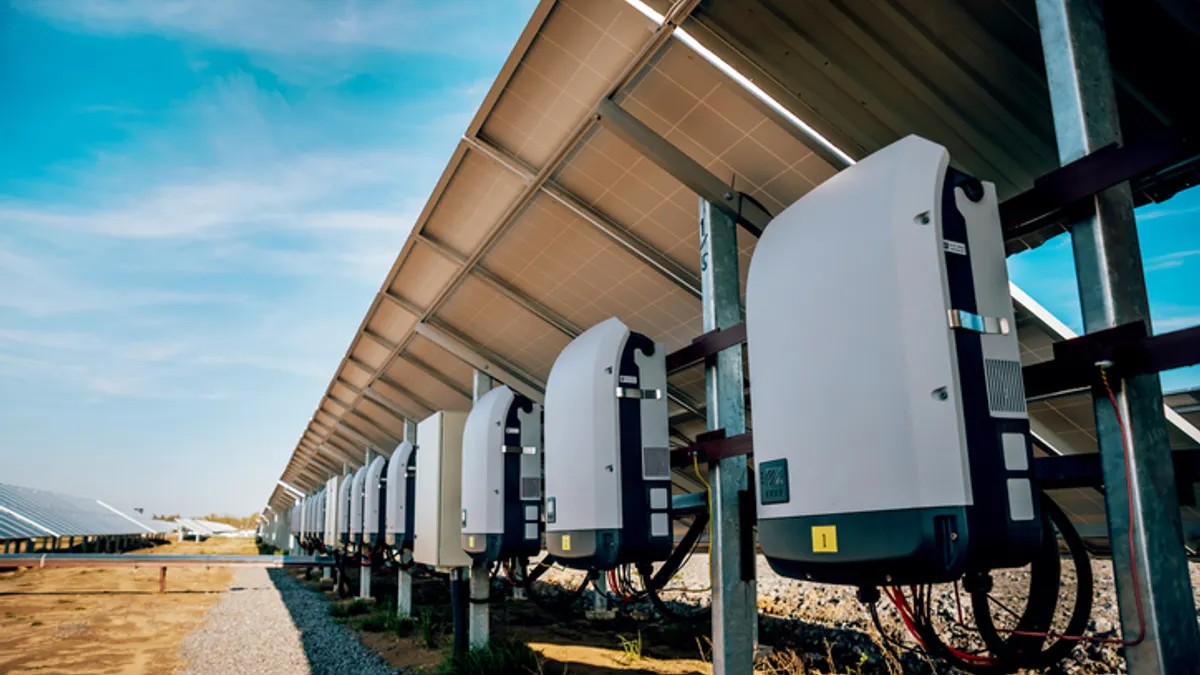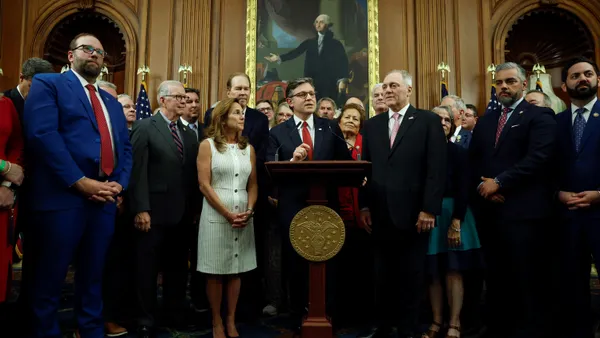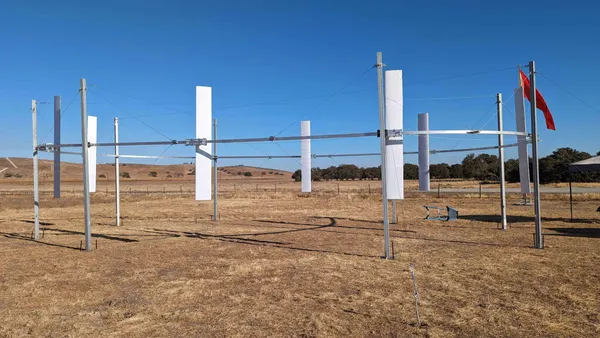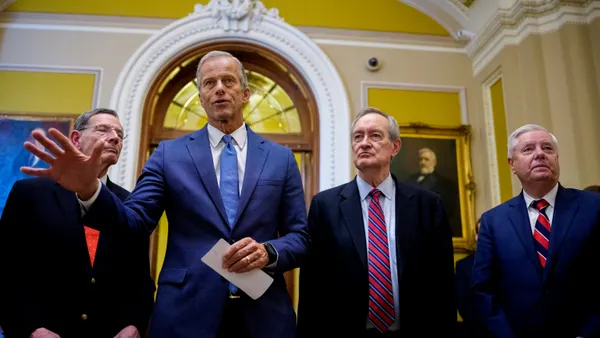Dive Brief:
-
President Joe Biden's proposed 2022 budget calls for increased spending on climate mitigation, research and a variety of infrastructure projects — including energy efficiency and transmission — while emphasizing economic recovery and job growth.
-
The budget calls for a $14 billion increase in climate-related spending compared to 2021 levels, with $2 billion in spending for clean energy projects and $6.5 billion in lending capacity to be made available for clean energy generation, energy storage and transmission projects in rural communities.
-
"America cannot afford to simply return to the way things were before the pandemic and economic downturn, with the old economy's structural weaknesses and inequalities still in place," a White House budget fact sheet reads. "We must seize this moment to re-imagine and rebuild a new American economy that invests in the promise and potential of every single American."
Dive Insight:
Jobs and economic recovery took center stage in the federal budget proposed by President Biden on Friday, but climate and clean energy took sizable honorable mentions.
The budget calls for $36 billion in overall investment to combat climate change, an increase of more than $14 billion over 2021. The bulk of the funding increases would be devoted to research and development, including the creation of a new Advanced Research Project Agency for Climate, but energy infrastructure, electric vehicles, and even international climate efforts would all receive a considerable boost in funding under the president's proposal.
According to the President's proposal, 40% of the benefits tied to this spending should go to benefit historically disadvantaged communities.
Principal deputy press Secretary Karine Jean-Pierre told reporters on Friday that the budget represented President's Biden's best efforts to "do what he promised to do" and improve the economy and create American jobs. She touted the President's economic track record to date, and said that so far Biden has created "more jobs than any other president" at this point in their term.
The proposed budget draws on elements from both the American Jobs Plan which aims to drive job creation with increased spending on public works and infrastructure, and from the American Families Plan, intended to shore up economic wellness at the individual and household level with investments in education, healthcare and child care. It proposes to invest $2 billion into clean energy projects and reserves $6.5 billion to lend to rural communities to support additional clean energy, energy storage and transmission projects, with the ultimate goal of laying thousands of miles of new transmission lines.
The budget proposes $1.7 billion for retrofit programs to improve energy efficiency in homes, schools and federal buildings, including $800 million for HUD modernization and rehabilitation programs, and $400 million for the Department of Energy's low-income weatherization programs. It also includes $600 million for electric vehicles and charging infrastructure to be distributed across 18 federal agencies, and a $1.2 billion contribution to the United Nations' Green Climate Fund, which supports climate mitigation in developing countries.
But the largest energy and climate investments in the 2022 budget are dedicated to research and development. Biden has proposed to spend $10 billion on clean energy innovation, increasing energy R&D spending by nearly 30%. $1 billion would go toward establishing the Advanced Research Project Agency for Climate and to projects within the existing Advanced Research Projects Agency-Energy. The budget also proposes to double funding for the Economic Development Administration’s Assistance to Coal Communities program.
"President Biden’s budget request puts America in the driver's seat as we transition towards a 100% clean energy economy," said Secretary of Energy Jennifer M. Granholm in a Friday afternoon statement. "These investments will ensure the U.S. is the global leader in research, development, and deployment of critical energy technologies to combat the climate crisis, create good-paying union jobs, and strengthen our communities in all pockets of America."
The DOE statement noted that priority areas of research currently include carbon-neutral fuels such as hydrogen, grid modernization, advanced nuclear energy, carbon capture and methane emissions reduction. The creation of ARPA-Climate, according to the statement, would facilitate new research into non-energy climate solutions, including adaptation, resilience and emissions mitigation.
According to the proposal, spending associated with both the American Jobs Plan and the American Families Plan would be paid off within 15 years through reforms to the corporate tax code. Although it proposes to "invest in American in a way we have not invested since we built the interstate highways and won the Space Race," the White House holds returns on these investments will cut the federal deficit by more than $2 trillion over the next ten years.



